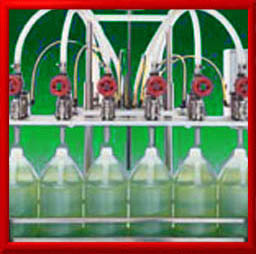

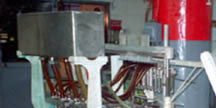 |
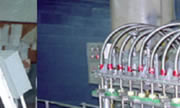 |
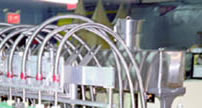 |
|
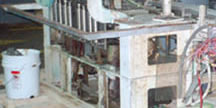 |
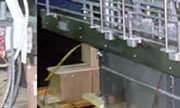 |
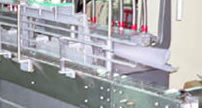 |
|
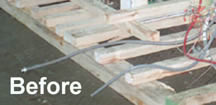 |
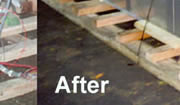 |
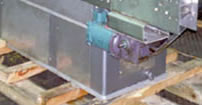 |
Did you ever wonder how all of those bottles of liquid products you see in the supermarket get filled up to a consistent level in such high volumes. Well the Piston Filler is just one of the many types of liquid filling machines out there designed to accomplish that task. One of the qualities of the piston filler is exact dosing of the required volume of product to bottle.
The machine you see above is a 12 head ganged piston filler made by ELF now E Pack. It has 12 nozzles on it to fill 12 bottles simultaneously when they are stopped momentarily on an indexing conveyor. In the back are 12 pistons or hollow cylinders which through a series of valves suck in a volume of material equal to the volume of the bottle as the piston is withdrawn from the chamber. It works just like when one charges a syringe with medication. Once the bottles are in place the suction valves close and the discharge valves open. The nozzle tubes are then lowered until the tips almost touch the bottom of the bottle and then the fill cycle is started. The pistons are all pushed in simultaneously just as if one was injecting drugs with a syringe. They are all made to move in a slow steady manner as they discharge product into the bottle. To prevent splashing the nozzle tips are raised at a rate that keeps them just above the product level inside the bottle until the fill cycle has been completed. This is commonly referred to as a bottom up fill. The fill cycle described above is also known as a volumetric fill because the target to be matched is the volume of empty space in the container. These machines are kind of slow compared to some other fillers because the pistons must charge and then discharge. That means two motions to achieve one result.
On real high volume applications they use high speed rotary fillers these machines can fill containers very fast because the fill nozzles move right along with the containers at the same speed as the conveyor, but you have to have real high volumes for production because these systems cost millions of dollars to set up properly.